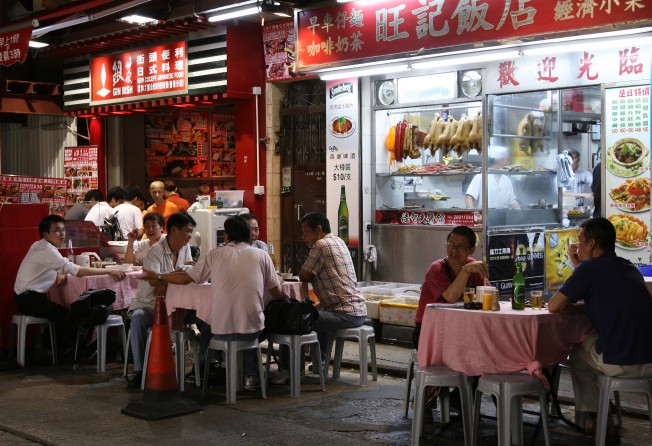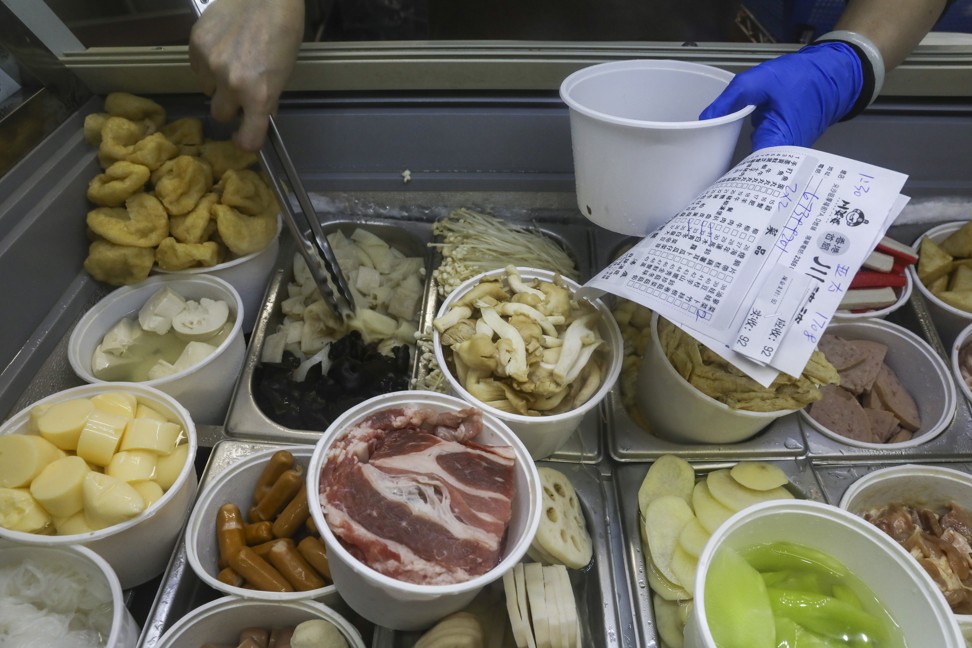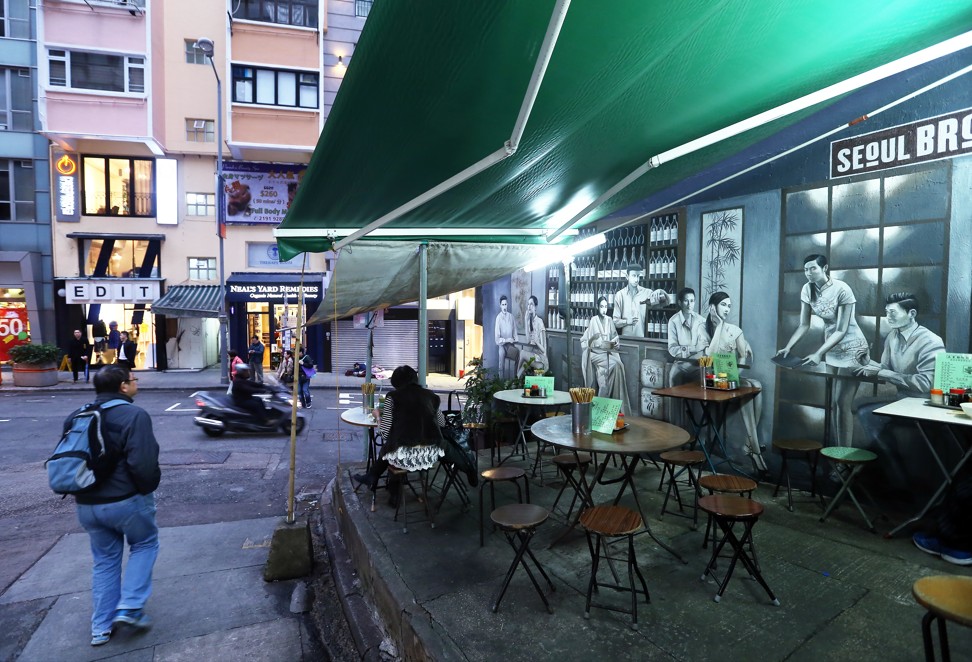
Outdoor alfresco dining in Hong Kong: why would you want to do it? Especially during summer
- If it’s not the heat, humidity or pollution ruining your appetite, then it’s the bugs, mosquitoes and fragrant sewage, Andrew Sun says
- A thorough overhaul is needed to make outdoor eating sexy and appealing. Turning sites like 1881 Heritage into cooked food centres could be a start

Alfresco dining is a bit like Chinese opera. Everyone claims it’s great to encourage and promote it as a part of local culture, but the truth is few people want to endure an entire evening of it. From what I see, the new generation finds eating outside about as appealing as a night of clanking cymbals and shrieking songs.
Have you ever tried to digest a meal sitting outdoors at a dai pai dong (street stall) in Hong Kong in the middle of summer? If it’s not the heat, humidity or pollution ruining your appetite, then it’s the bugs and mosquitoes annoyingly nibbling your ankles while you try to enjoy a few blue-collar Cantonese dishes in the night air.
Tourists might go to Temple Street in Yau Ma Tei for a must-try experience of claypot rice while sitting on stools on the kerb, but nobody I know in Hong Kong is remotely interested in being exposed to back-alley aromatic garbage and fragrant sewage during supper. If there’s a choice between air-conditioned indoor seating or a true alfresco table, you can bet locals will sit inside.
In an article published earlier this year, my colleague Bernice Chan asked indignantly why the Netflix series Street Food left Hong Kong off its menu? I would have left us off the show, too. Curry fish ball stalls and egg waffle carts just don’t cut it compared to our regional neighbours.

Thailand, Taiwan, Singapore and Malaysia have thriving alfresco street food cultures. Hong Kong, for better or worse, has moved beyond street dining, the same way we’re past riding rickshaws to get somewhere. Other cities also have dedicated and tented cooked food centres with parking, cooling fans and the open space to enjoy a festive environment.
The vanishing outdoor tradition here isn’t just the fault of myopic officials not issuing dai pai dong licenses any more. The real problem is there really isn’t much interest. Alfresco isn’t popular because it’s not especially fun or exciting here. The only people who actually prefer outdoor dining are smokers and expats who just arrived from a cold and gloomy climate.

What we need is a thorough and holistic overhaul to make outdoor eating sexy and appealing. The existing outdoor stalls tend to operate in drab housing estates, usually patronised by old men and pensioners. Some might call that setting quaint; I say it’s dreary and depressing.
It doesn’t help that the government doesn’t really understand hospitality. The last great idea from an official was to bring food trucks here. How’s that concept working out?
Funny thing is, Hong Kong always had its own food trucks via mobile carts, which sold noodles, meats and desserts in the 1970s and ’80s. That kind of mobile enterprise made far more sense here than large, unwieldy Winnebagos and trucks.

If we really want to revive alfresco culture, we have to take it back to its roots. I’d take a failing white elephant like the PMQ creative hub in Central and use it for a lowdown dai pai dong every weekend. Next, I’d lease some of the space to authentic local food makers – maybe a bamboo pole noodle shop or a dragon beard candy maker. Wouldn’t they be interesting for tourists to see?
On Kowloon side, I would take back the 1881 Heritage shopping mall from the private developer and turn the interior courtyard into an alfresco cooked food centre serving classic Hong Kong treats. Why are we letting such a historic site be wasted as a place for boring, characterless luxury shops and the city’s least private boutique hotel – seriously, people are photographing outside the rooms all day long!
Just think how an iconic, showcase dai pai dong in the middle of Tsim Sha Tsui would be filled with locals and visitors every night. I know I would think it’s outdoor dining worth sweating for.